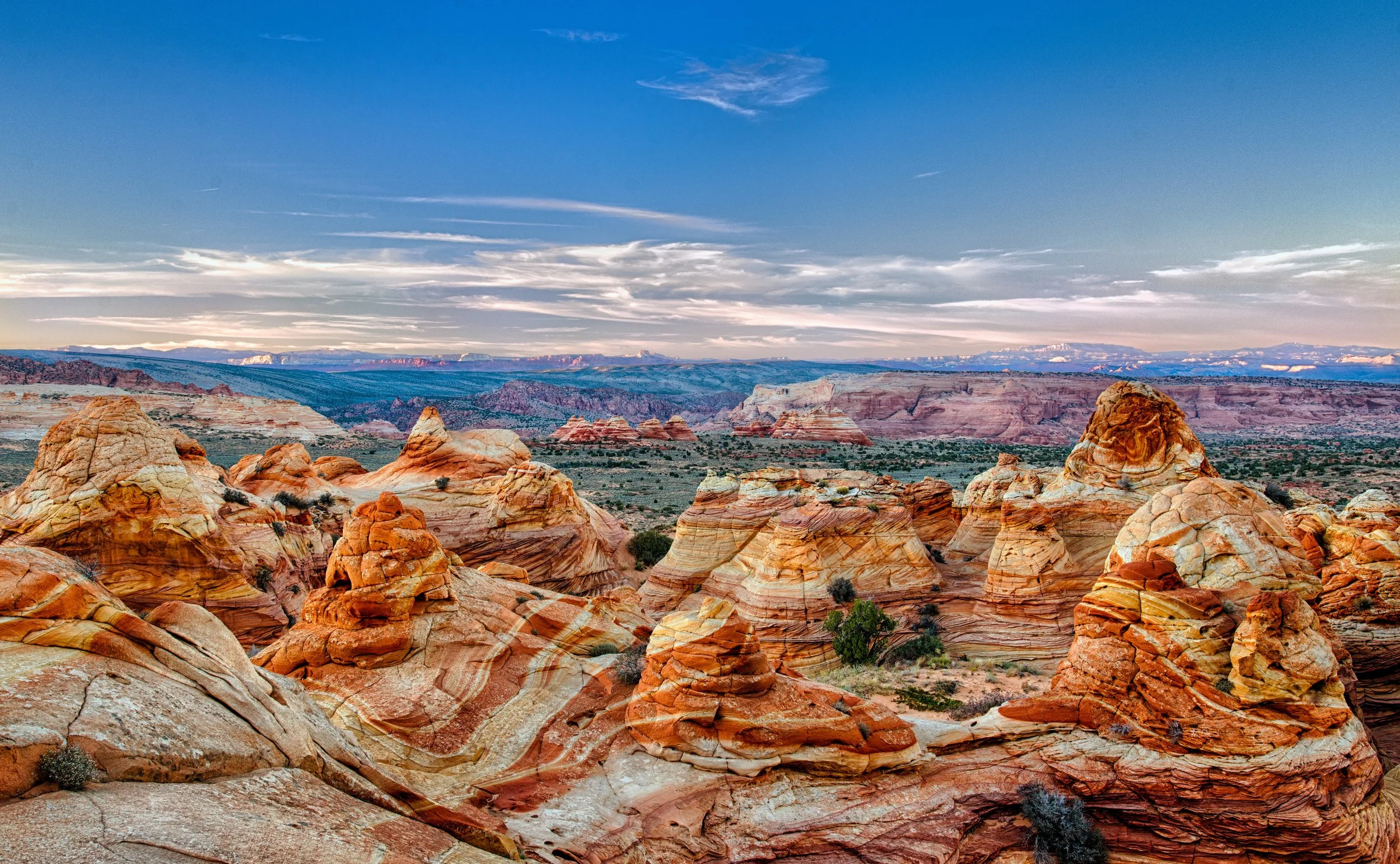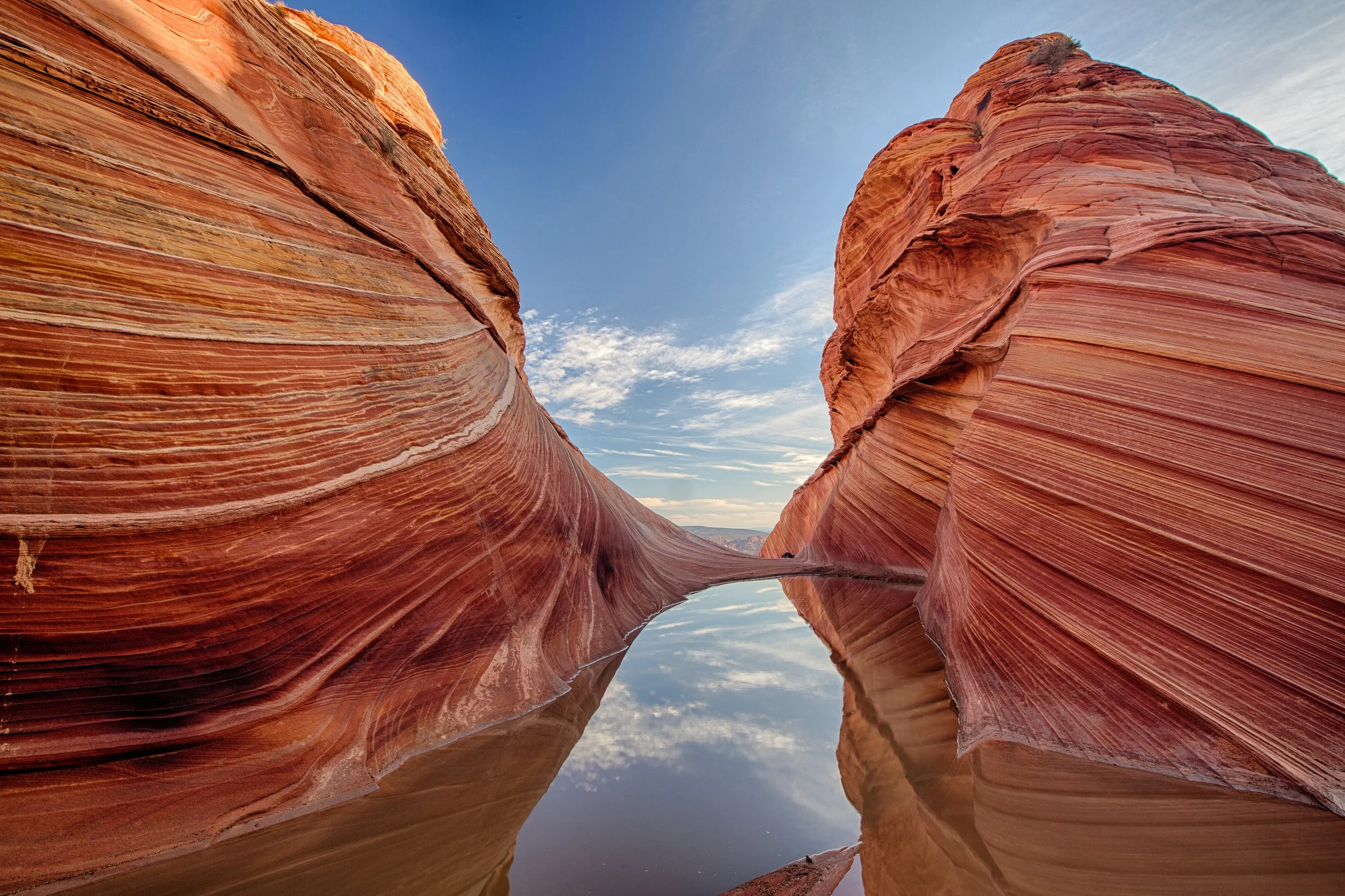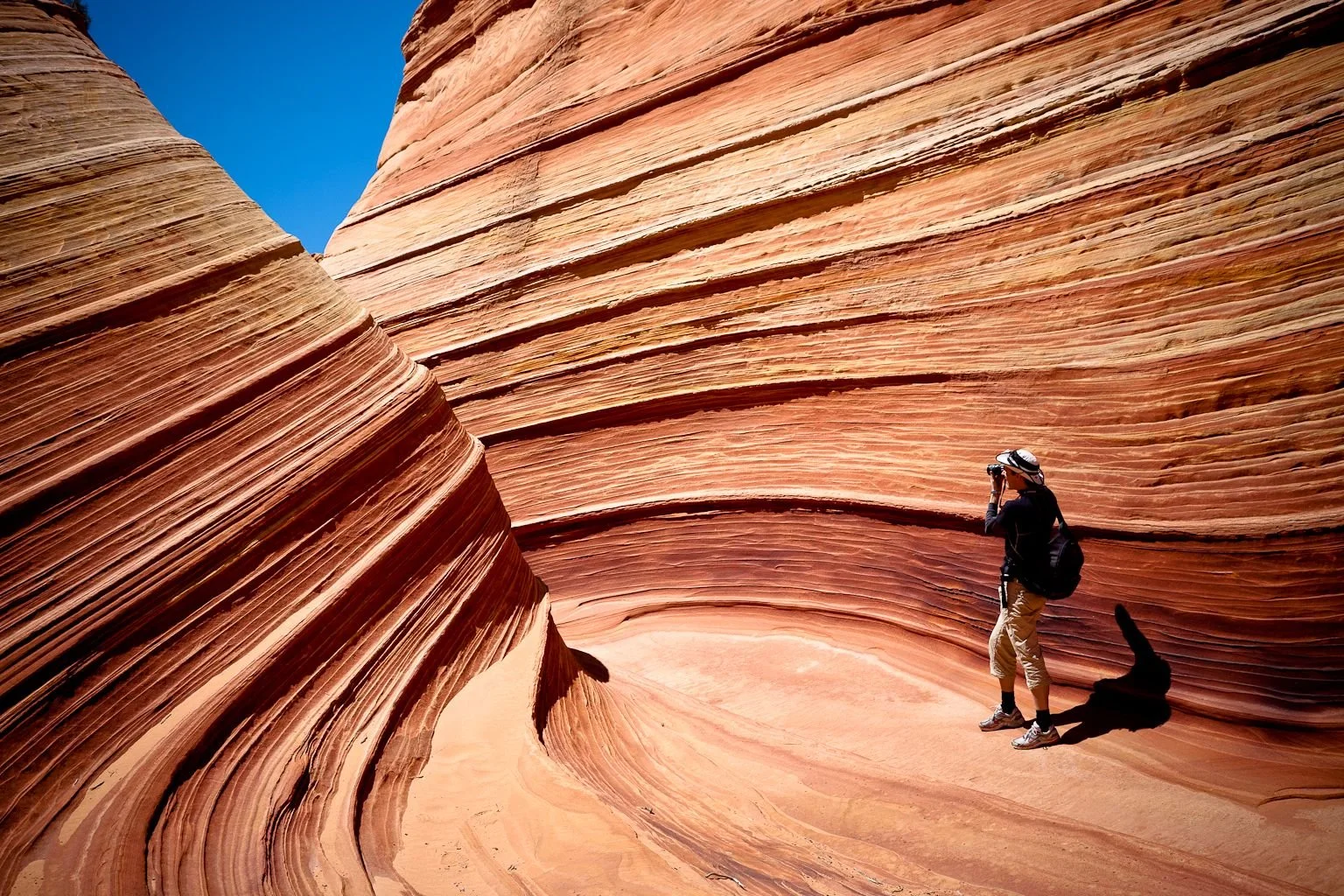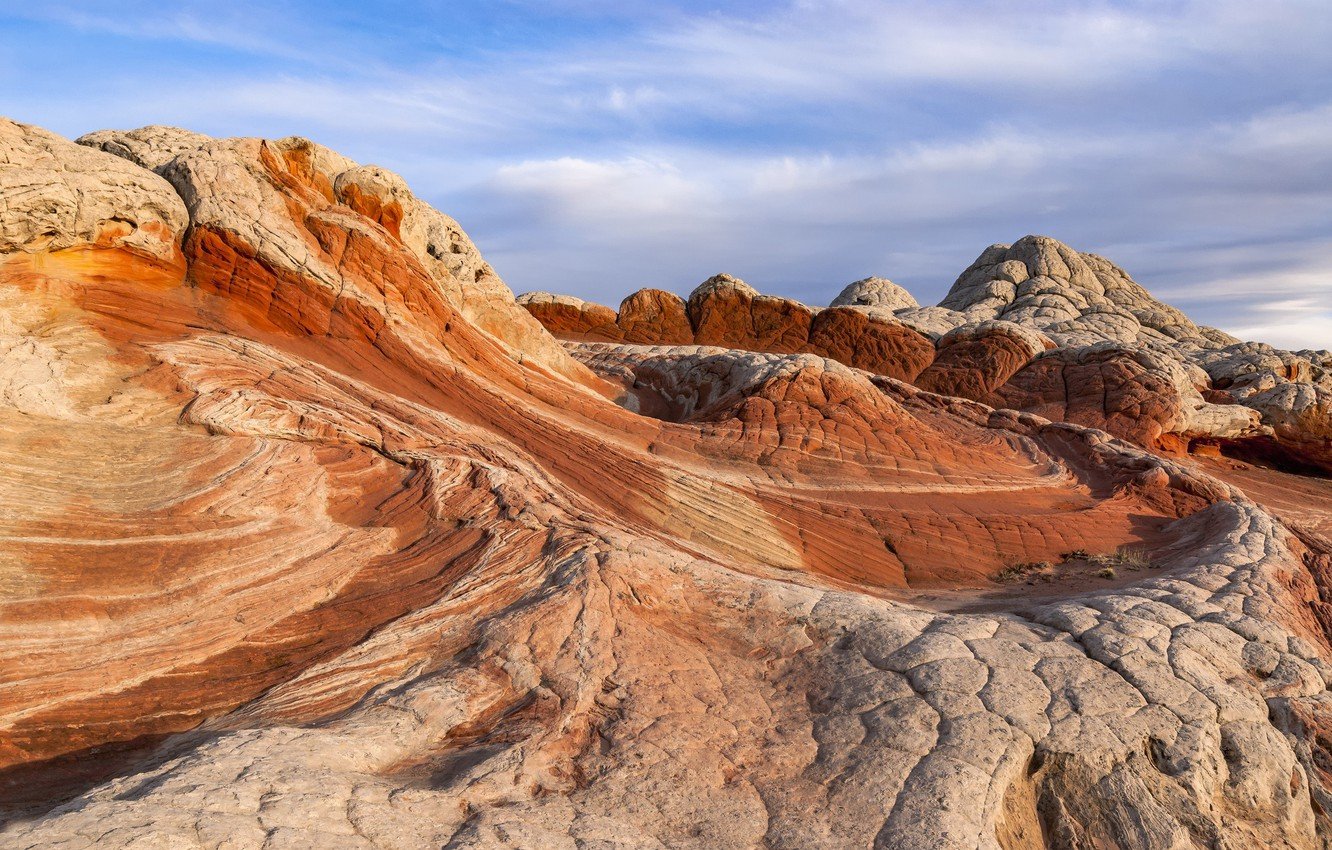
Vermilion Cliffs National Monument
Vermilion Cliffs National Monument, a hidden gem in the heart of the Colorado Plateau, is a captivating destination that invites visitors to explore its dramatic landscapes, unique geological formations, and rich biodiversity. Nestled between the Grand Canyon and the Utah border in northern Arizona, Vermilion Cliffs offers a remote and pristine wilderness experience for those seeking adventure and natural beauty.
The first glimpse of Vermilion Cliffs often comes from the iconic and aptly named "Wave," a sandstone formation with undulating, colorful patterns that resemble the ripples of a wave. Access to the Wave is limited and requires a permit obtained through a lottery system, ensuring the preservation of this delicate and otherworldly landscape.
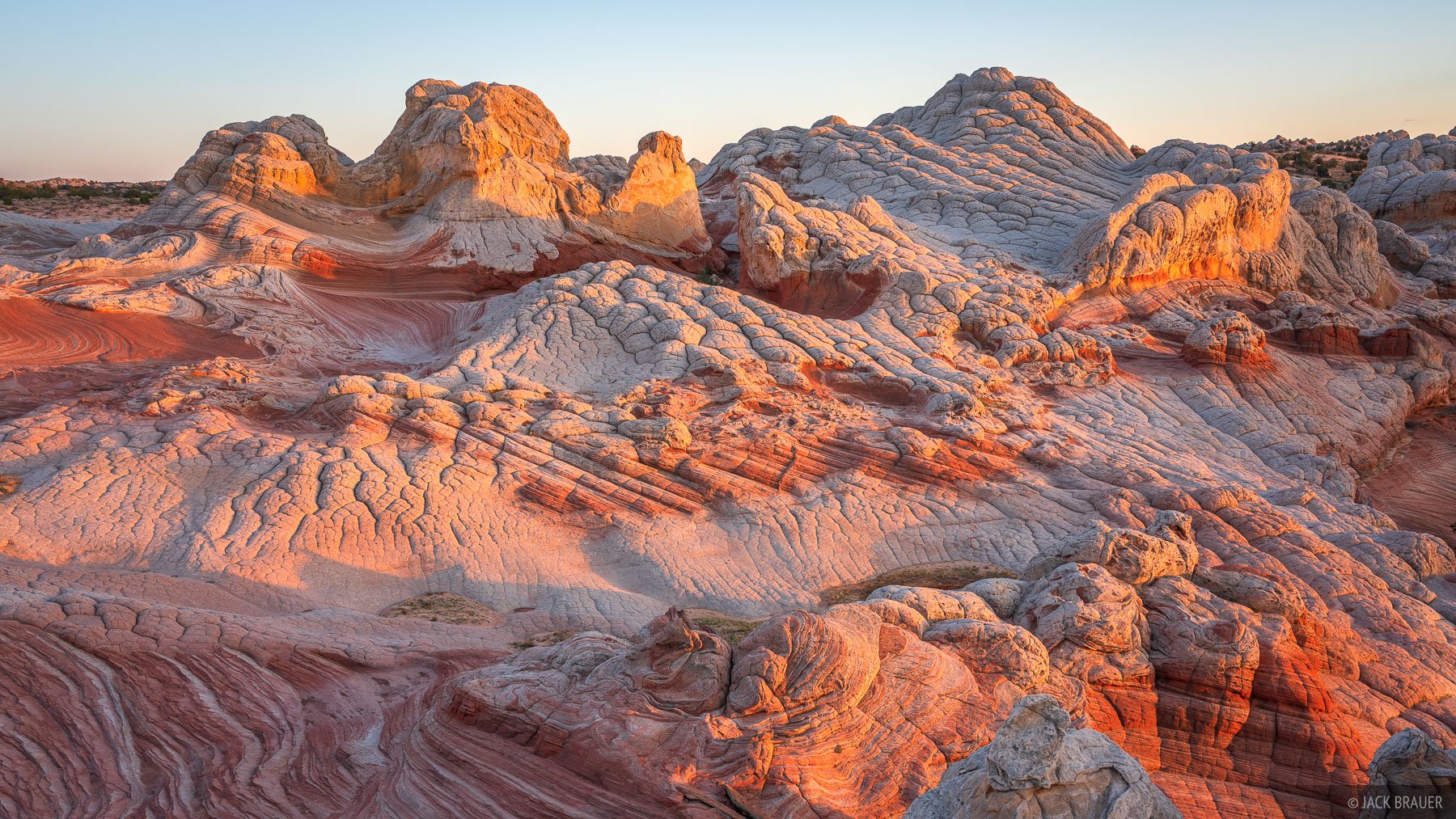
The Paria Plateau, part of Vermilion Cliffs National Monument, features a diverse array of geological wonders, including the Coyote Buttes and Paria Canyon. These areas are renowned for their vibrant, striated rock formations, towering sandstone cliffs, and unique hoodoos. The hiking trails in Coyote Buttes South, such as the White Pocket and Cottonwood Cove trails, provide opportunities for exploration away from the crowds.
The Paria River Canyon, with its sculpted narrows and colorful canyon walls, offers a different type of hiking experience. The Buckskin Gulch, one of the longest slot canyons in the world, is a challenging but rewarding trek for those seeking solitude and stunning geological features.
Wildlife enthusiasts will appreciate the rich biodiversity of Vermilion Cliffs. The area is home to a variety of desert-adapted plants and animals, including bighorn sheep, coyotes, and a diverse array of bird species. The seasonal blooms of wildflowers add bursts of color to the arid landscapes.
Overlooking the Vermilion Cliffs is the dramatic and panoramic overlook known as Marble Canyon. The views from this vantage point extend across the canyon and the Colorado River, providing a breathtaking glimpse into the vastness of the region.
Primitive camping is available within Vermilion Cliffs National Monument, providing a unique opportunity to experience the solitude and tranquility of the desert landscapes. Visitors should come well-prepared, as amenities are limited, and the remote nature of the area adds to the sense of adventure.
The changing seasons bring distinct experiences to Vermilion Cliffs. Spring and fall offer mild temperatures, making it an ideal time for hiking and exploration. Summer can be hot, so visitors should plan accordingly and carry sufficient water. Winter brings cooler temperatures, providing a more comfortable environment for outdoor activities.
Access to Vermilion Cliffs National Monument requires careful planning, as the area is remote, and some attractions may require permits. Visitors should be well-prepared with essentials such as water, proper footwear, and navigation tools, as services and facilities are limited.
In conclusion, Vermilion Cliffs National Monument is a rugged and enchanting landscape that rewards those willing to venture off the beaten path. Whether exploring the mesmerizing patterns of the Wave, hiking through slot canyons, or gazing across the vastness of Marble Canyon, visitors to Vermilion Cliffs are treated to an immersive and untamed natural experience in the heart of the American Southwest.

